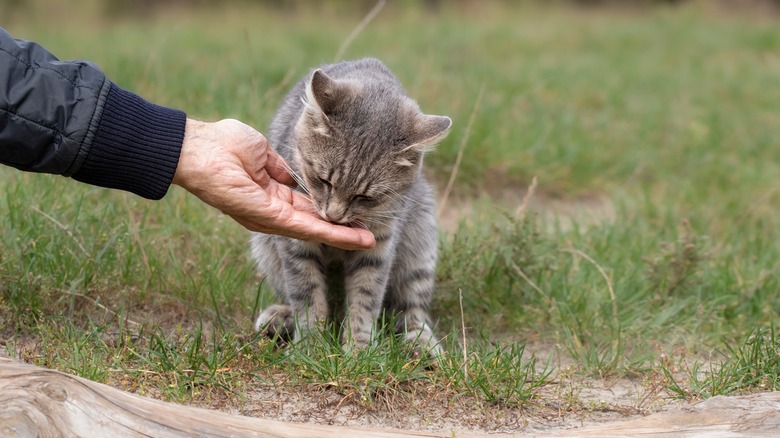The Biggest Difference Between Feral And Stray Cats Is More Significant Than You Might Think
Feral and stray cats are often confused; however, they differ in more ways than you might realize. While both live outside, they tend to have divergent socialization levels. A stray cat likely used to be a pet, whether they have now gotten lost or were abandoned. On the other hand, feral cats are not socialized to humans, typically having had very little if any connection with people.
One of the ways that feral cats survive in the wild is by forming colonies. Cats are independent hunters, and while not all feral cats join such groups, many do. When in a colony, feral cats typically live together and share a common food source. There's a chance a stray cat could join a colony, but often they live alone and may not have the necessary skills or resources to fend for themselves in the wild.
Feral cats cannot become a household pet while strays usually can
While a stray cat has probably lived with humans before and can likely be rehomed, adult feral cats do not make good pets due to their complete lack of socialization. However, feral-born kittens under eight weeks old can usually be socialized pretty quickly, but this grows much more difficult as they age. By the time feral kittens reach four months old, socialization becomes harder, and even if they are able to be fully socialized, they will likely still show some feral traits for their whole lives.
If a stray cat ends up living outdoors for a long period of time, there is a chance they could start to develop feral traits due to their lack of human interaction. However, unlike with fully feral cats, stray cats will typically still have the ability to be resocialized and become a pet again. While feral cats can't usually be indoor pets, they might become what some refer to as "community cats," which are free-roaming felines who have caretakers who provide necessities, such as food and water, for them. Some caretakers may even create outdoor houses to keep community cats safe and warm.
How to tell the difference if you encounter a wild cat (and what to do)
If you encounter a cat in the wild and suspect they could be feral or stray, there are certain things you can observe to help you reach a conclusion. For one, a feral cat typically won't approach humans, and instead may choose to hide. A stray cat, however, is more likely to move towards people, but there's still a chance a stray is shy and may act similarly to a feral cat in the wild. While both types of felines might come closer to you if you have food, a feral cat typically won't eat it until you leave, while a stray will be more likely to eat immediately.
Often, stray cats will appear more dirty and disheveled, while feral cats will look better groomed. Stray cats also tend to be thinner than feral cats, as they don't know how to hunt and fend for themselves like feral cats do. Checking for ear tips may provide another clue, as a feral feline might have had part of its ear removed via a trap and return program that spays and neuters outdoor cats and then releases them.
If the cat you run into shows signs of being feral, it's best to just leave it alone. If you find a kitty who appears to be a stray, determine if the cat has any identification, like a collar, create a safe space for it, and bring it to a vet to be checked for a microchip if there's no ID tag. In the event that you can't determine where it came from, work with a local rehoming organization to safely place the stray cat with a new owner.


